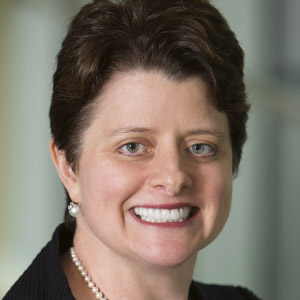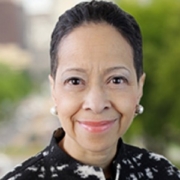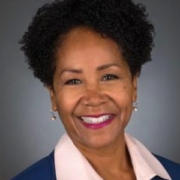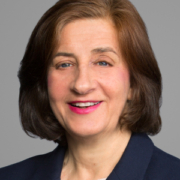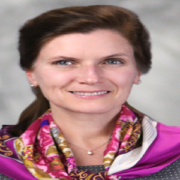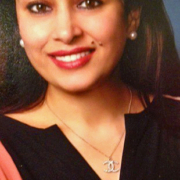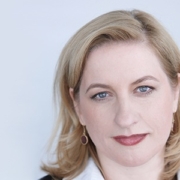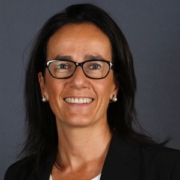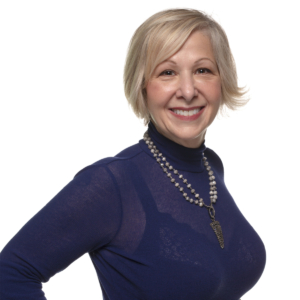Kristen Walters, Global Chief Operating Officer of Risk & Quantitative Analysis, BlackRock
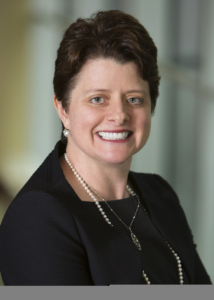 When Kristen Walters, Managing Director at BlackRock, started her career, mentors in finance told her that she needed to learn accounting because it was the “language of business” at the time.
When Kristen Walters, Managing Director at BlackRock, started her career, mentors in finance told her that she needed to learn accounting because it was the “language of business” at the time.
Studying accounting gave her an entry into finance with a technical skill that opened the door to a long career. “Today’s technical language is computer science and coding,” says Ms. Walters, advising young women to make sure their technical backgrounds include math and programming skills.
“What was true when I started my career remains applicable now. Women should consider technical fields where there is growth and a long runway.” While she believes it is imperative to study a discipline with broad applicability, Ms. Walters acknowledges that successful careers often include an element of luck, coupled with a strong work ethic and intellectual curiosity. She has also benefited from male and female mentors who have helped guide her career and give her opportunities to learn and grow.
Building a Solid Career in the Field of Risk
These principles have served Ms. Walters well. After graduating with a degree in accounting and economics at the University of Massachusetts at Amherst, she started her career as a financial analyst in Supervision and Regulation at the Federal Reserve Bank of Boston.
At the time, there was a significant banking crisis in the Northeast, and she was able to spend time “in the foxhole” and learn valuable risk management skills that are difficult to learn in normal market conditions. She spent more than five years at the Fed learning about interest rate, credit and liquidity risk in lending and securities portfolios, while earning her MBA in finance at Babson College. In 1993, she joined KPMG’s financial services consulting practice, where she focused on risk management engagements working for a PhD Economist who was Paul Volker’s right-hand man when he was the chairman of the Federal Reserve Board.
She eagerly embraced the opportunity to learn derivatives and spent the next several years working with cross-functional teams on risk assessments for large international banks with trading operations in the United States. She notes that in the mid-90s, risk management was not an established sector and she was lucky to find an opportunity to combine her quantitative skills with her ability to communicate and understand financial markets. “I worked closely with financial modelers who typically had advanced degrees in applied math. KPMG’s quants would explain complex models to me, and I would communicate how the models worked with traders, risk managers and boards of directors,” she says. “They needed someone to help translate complex valuation and risk concepts to clients, and even though I am not a mathematician, I am analytical with a grounding in stats and calculus, so I was able to learn how models worked with guidance from colleagues with technical expertise.”
Ms. Walters has been a risk manager ever since, including a challenging period helping to manage firm-wide market risk at Goldman Sachs during the financial crisis. “It was a ‘trial by fire’ time, where everyone had to stay composed under a tremendous amount of pressure,” she says, adding that she led the first Fed stress testing exercise for the market risk team.
Ms. Walters has worked at BlackRock for 10 years focusing on risk management and analytics. She is currently the Chief Operating Officer of the firm’s global risk management function, where her team leverages BlackRock’s Aladdin trading and risk management system. And, she is currently working with software developers and risk managers to enhance risk management capabilities in Aladdin. She has helped provide risk managers with tools to code in Python to build libraries to access data in Aladdin directly, a trend she has observed occurring across the industry. “It is very exciting because data and technology systems used to be prohibitively expensive with a big learning curve. The advent of big data and open source technology, along with increased computing power, has made data and technology cheaper and more accessible.”
Using Resources to Navigate the Business
Ms. Walters noted that over the years her development focus changed—in her 20s and 30s it was easier to advance with the right technical and communication skills, combined with tenacity. But the work environment becomes more complicated once you reach the age of 40 and above, because your influencing skills need to improve markedly when you start to take on leadership positions.
“There is an element of needing to adapt to the team; I am outspoken and candid and that worked earlier in my career, but when you become more senior, particularly in a male-dominated space, you have to remember that what you say is not always as important as how you say it.” And, the bar is higher for women relative to technical skills, competency and communication and influencing skills.
Navigating male-dominated environments has presented challenges, but she appreciates groups like the Women’s Leadership Forum at BlackRock which provided leadership training and peer networks to add to her toolkit. She says that in the mid-90s, conscious bias against women was relatively common, although she rarely personally experienced it. She thinks this is because she was good at selecting companies and managers who were supportive and open-minded. Today, gender bias issues can be difficult to raise because most men are genuinely and consciously trying to develop diverse teams. And, they are often unaware of “unconscious” biases they are exhibiting.
Ms. Walters noted that many of her male colleagues are actively trying to foster diverse and inclusive teams. She has also found that establishing a strong network of women is critical to success in the finance sector. While not every company provides that type of support, she encourages younger women to establish their own networks. “Many women hesitate to ask, but they might be surprised how willing both men and women are to help,” she says, noting that when she has reached out to senior people, 90 percent of the time they have been happy to spend time and help—and she now does the same.

